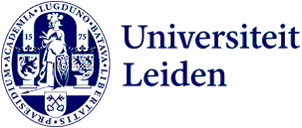Willows in the Dutch polder
What will the Dutch polder landscape look like in the future? Ecologists and social scientists, in collaboration with farmers and citizens, are trying to answer this question in Polderlab VrouwVenne just outside of Leiden.
Polderlab is part of a polder landscape with meadows, cows and ditches: “‘Typical Dutch”, people tend to say. People usually mean the landscape and indirectly they point towards livestock farming as standard practice in the Netherlands. But less livestock farming is needed to tackle the climate and biodiversity crisis. In PolderLab, scientist, and citizens are therefore experimenting with wet soil crops such as cranberry, water soldier and even rice. This is called paludiculture and it may be the future of Dutch sustainable farming. This is the topic of this internship.
Willows
Together with the Peat Meadow Innovation Centre and industry partners, we are exploring one ‘paludicrop’, namely willow. Willows can grow under relatively wet conditions and willow shoots have a range of possible uses including as a biobased alternative for concrete and Styrofoam. While the willow thus has potential as a crop, producing willows will change the look and feel of the Dutch polder landscape quite radically. Willow shoots are typically harvested every three years and, in that period, grow up to 6 meters. Such radical changes in the landscape might not be welcomed by all humans and more-than-humans who work in, look at or inhabit a polder. People living in and near the polder may be attached to the spacious view of grass with a few cows dotting the landscape. Meadowbirds and meadow bird enthusiasts might be concerned that birds of prey could use the willows to find their nests. The existing soil microbiome may disappear. Farmers might, on the other hand, welcome the diversification of income streams.
Conduct an in-depth, ethnographically-based stakeholder analysis
As part of the internship, you will conduct an in-depth, ethnographically-based stakeholder analysis of a willow plantation in a Dutch polder. You will identify both human and more-than-human stakeholders, you will identify their concerns, and you will identify how these concerns are negotiated in various practices (of growing, of cutting, and of harvesting willow, too just name a few examples). We want to know how human and nonhuman stakeholders use and engage with the polder currently and how willow production might change this (for worse or better).
